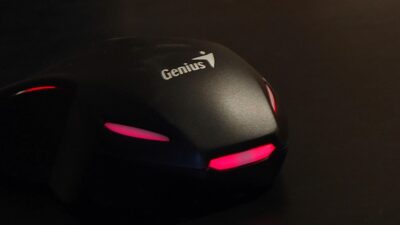The central processing unit (CPU), often referred to as the "brain" of a computer, has undergone significant evolution since its inception. Microprocessors have been pivotal in this transformation, catalyzing a technological revolution that continues to redefine how we interact with the world. This article explores the journey of CPUs from their primitive beginnings to the powerful microprocessors that drive today’s devices.
The Birth of CPUs: 1940s – 1950s
The first electronic computers, developed in the 1940s, utilized vacuum tubes and were massive, room-sized machines. The ENIAC (Electronic Numerical Integrator and Computer), completed in 1945, was one of the first to demonstrate the concept of a programmable computer, although it was hardwired for specific tasks.
The transition from vacuum tubes to transistors in the late 1950s marked the beginning of a new era. Transistors were smaller, more reliable, and consumed less power, leading to the creation of smaller and more efficient computers. Yet this early era primarily consisted of discrete circuitry and did not involve microprocessors.
The Birth of the Microprocessor: 1970s
The true revolution began in 1971 when Intel introduced the first commercially available microprocessor, the 4004. This 4-bit processor combined the functions of a CPU onto a single chip, paving the way for the development of personal computers. The 4004 was limited in capability by today’s standards, performing only simple tasks, but it set a precedent for future innovations.
The subsequent iterations, such as Intel’s 8008 and 8080, extended processing capabilities and supported more sophisticated applications. The introduction of the 8086 in 1978 led to the creation of a 16-bit architecture that would become the foundation for x86 architecture, a standard that is still prevalent in modern computing.
The Rise of Personal Computing: 1980s – 1990s
The 1980s saw rapid advancements in CPU technology alongside the rise of personal computing. With the introduction of the IBM PC in 1981, powered by the Intel 8088 processor, microprocessors became the centerpiece of home and office computing.
During this era, competing companies like AMD, Motorola, and later ARM began producing their own processors, fostering innovation and driving down prices. The emergence of graphical user interfaces (GUIs) required more powerful CPUs, leading to the development of multi-core processors in the late 1990s, which allowed for parallel processing and multitasking capabilities.
The Multi-Core Revolution: 2000s
The 2000s ushered in the multi-core era, with manufacturers like Intel and AMD moving from single-core to dual-core and eventually quad-core processors. This shift was crucial as it allowed for substantial improvements in performance without a corresponding increase in clock speed, which had faced physical limitations due to heat generation.
Parallel computing emerged as a key concept, enabling processors to handle multiple processes simultaneously. This was essential for applications like gaming, video editing, and scientific simulations, which demanded more processing power.
The Mobile Computing Era: 2010s
The rise of smartphones and tablets in the 2010s transformed CPU design principles. Power efficiency became as crucial as processing power. Companies like ARM began to dominate the mobile market by designing energy-efficient processors that could sustain longer battery life, a necessity for portable devices.
Apple’s introduction of the A-series chips, along with Qualcomm’s Snapdragon processors, showcased the trend of optimizing CPUs for specific tasks, from graphics processing to artificial intelligence, further expanding the capabilities of mobile devices.
Modern Trends: AI and Beyond
As we entered the 2020s, the focus shifted towards specialized processors capable of handling artificial intelligence and machine learning tasks. Graphics Processing Units (GPUs) began to be adapted for parallel processing, drastically improving their role in AI computations. Companies like NVIDIA and Google have developed custom chips, such as Tensor Processing Units (TPUs), that are specifically designed for AI workloads.
Moreover, the advent of quantum computing poses a new frontier for computation. While still in its infancy, quantum processors promise to solve problems traditionally deemed infeasible for classical CPUs, thereby opening doors to revolutionary advancements in fields such as cryptography and complex simulations.
Conclusion
From the bulky vacuum tubes of early computers to the sleek and powerful microprocessors we rely on today, the evolution of CPUs reflects humanity’s relentless pursuit of efficiency and capability. Microprocessors have not only transformed computing but have also influenced every aspect of modern life, from communication to transportation. As technology continues to advance, the future of CPUs promises to be even more exciting, potentially unlocking new realms of possibility that we can barely imagine today. The journey of the CPU is not just about technology; it’s about how we, as a society, adapt and innovate in a world defined by the computational power we wield.


